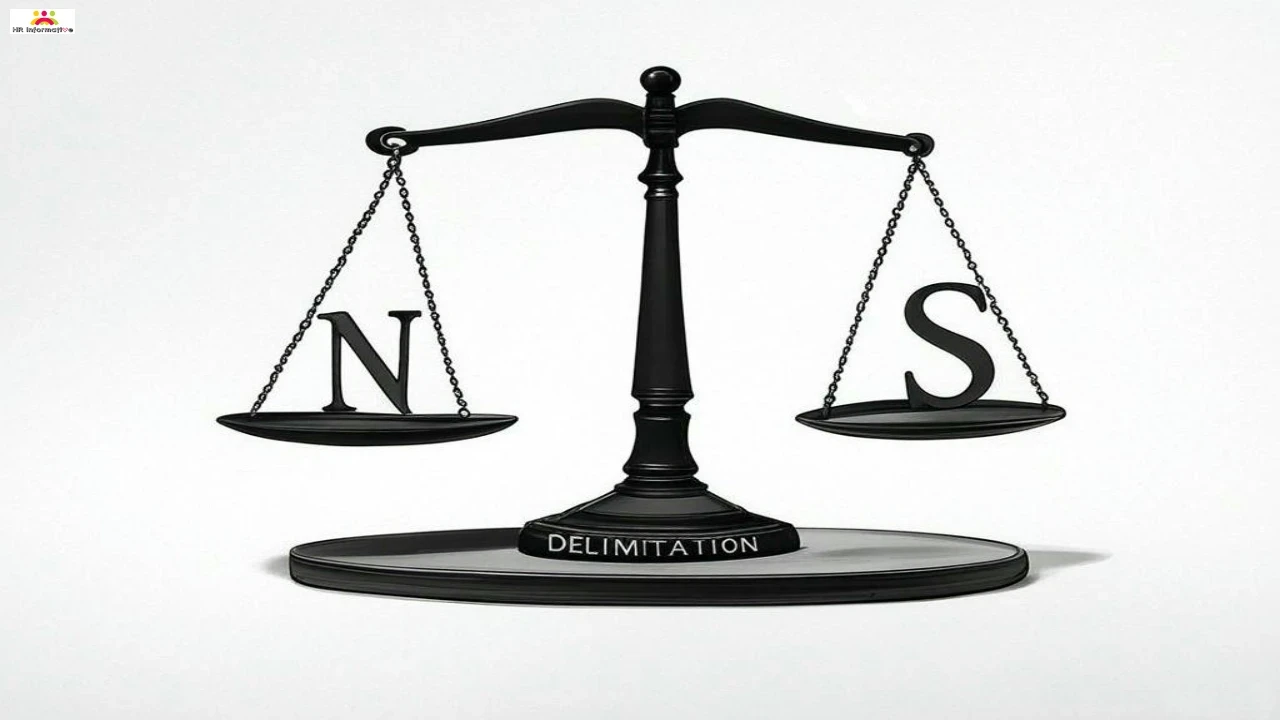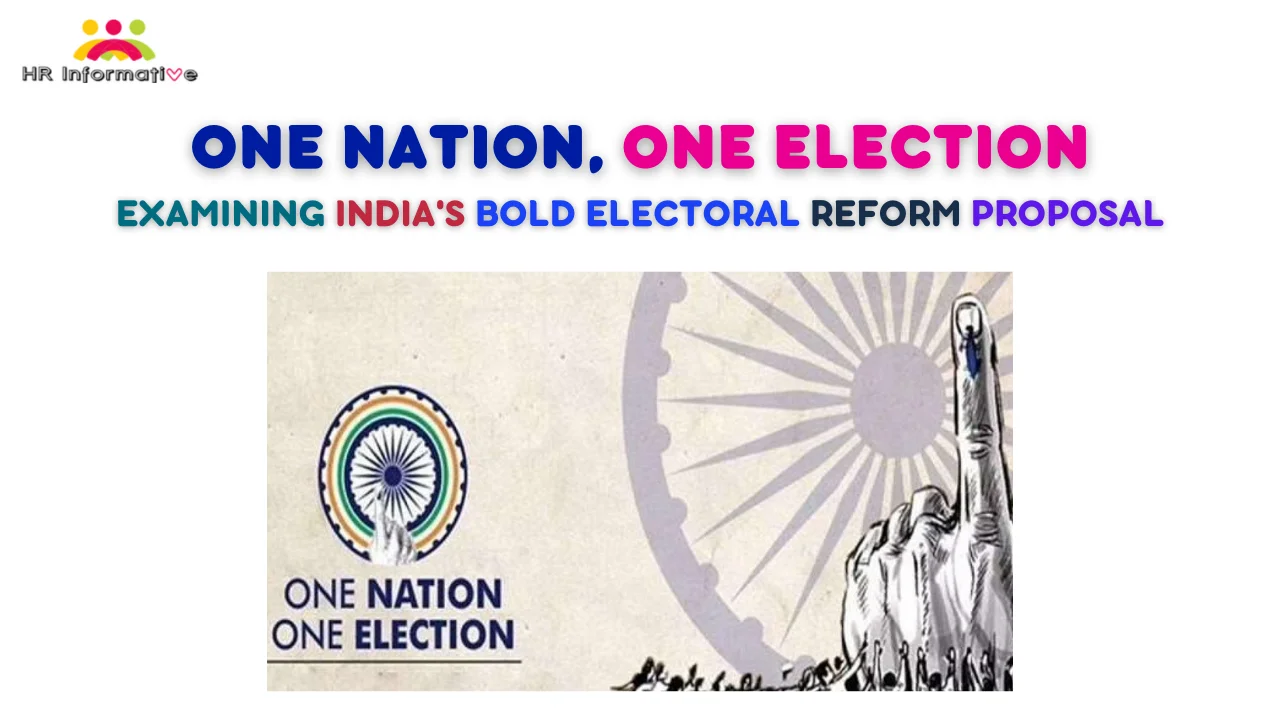In a democracy, every vote should ideally have equal value, and every citizen should have fair representation. To ensure this, especially in a large and diverse country like India, a process called Delimitation is periodically undertaken. But what exactly is delimitation, why is it important, and why are some states worried about it? Let’s break it down in simple terms.
What is Delimitation?
Imagine you are dividing a cake among many friends. To be fair, you would want to divide it based on the number of friends present so everyone gets a roughly equal piece. Delimitation is somewhat similar, but instead of cake, we are talking about political constituencies and instead of friends, we are talking about citizens.
“Delimitation” literally means drawing boundaries. In the context of elections, it is the process of fixing or redrawing the limits or boundaries of parliamentary and assembly constituencies in a country or a state that has a legislative body. Think of constituencies as geographical areas from which people elect their representatives (like Members of Parliament or Members of Legislative Assembly).
Purpose of Delimitation:
- Fair Representation: The primary goal is to provide equal representation to all citizens. This means ensuring that each constituency has roughly the same population.
- Equal Value of Vote: Delimitation tries to make sure that the number of voters in each constituency is approximately the same. This way, the vote of each person has nearly equal value across the country.
- Reflecting Population Changes: Populations grow and shift over time. Delimitation is necessary to adjust constituency boundaries to reflect these demographic changes and maintain fair representation. It is ideally conducted after every Census.
How Delimitation Works in India
In India, the job of delimitation is assigned to a high-power body called the Delimitation Commission.
The Delimitation Commission:
- Independent Body: This is an independent body appointed by the Parliament. This independence is crucial to ensure that the process is free from political influence and is conducted impartially.
- High Power: The orders of the Delimitation Commission have the force of law and cannot be challenged in any court. This highlights the authority and importance of this commission.
- Composition: Typically, the commission is chaired by a retired Supreme Court judge. It also includes members from the Election Commission and State Election Commissions.
- Past Commissions: Delimitation Commissions have been set up in India multiple times – in 1952, 1963, 1973, and 2002.
Basis and Process:
- Population is the Key: The delimitation process is primarily based on population figures from the latest Census. The idea is to have a similar number of people in each constituency.
- Redrawing Boundaries: The Commission redraws the boundaries of constituencies based on population data. This may involve:
- Adjusting existing constituency boundaries.
- Creating new constituencies if the population has increased significantly in an area.
- Merging or removing constituencies if the population has decreased.
- No Modifications Allowed: Once the Delimitation Commission finalizes and publishes its orders, they are presented before the Parliament and State Legislative Assemblies. Importantly, these bodies cannot make any modifications to the orders.
Why is Delimitation Important?
Delimitation is a fundamental process for a healthy democracy for several reasons:
- Ensures Fair Play: As populations change, some constituencies become much larger or smaller than others if boundaries are not adjusted. Delimitation corrects this imbalance, ensuring that every elected representative represents a roughly similar number of people.
- Upholds “One Person, One Vote”: By ensuring constituencies have similar populations, delimitation strengthens the principle of “one person, one vote, one value.” Without it, a vote in a smaller constituency could have more weight than a vote in a larger one, which is undemocratic.
- Impacts Political Landscape: Delimitation can significantly alter the political map. Changing constituency boundaries can affect the prospects of political parties and individual candidates. Some areas may become more or less favorable to certain parties due to demographic shifts reflected in the redrawn boundaries.
The Fear of Southern States: Loss of Parliament Seats
Recently, there has been a significant debate and concern, particularly from the Southern States of India, regarding the next delimitation exercise expected after 2026. This fear stems from the demographic differences between the Northern and Southern parts of India.
The North-South Population Divide:
- Population Growth Rates: Northern states, particularly states like Uttar Pradesh, Bihar, Madhya Pradesh, and Rajasthan, have generally experienced higher population growth rates compared to Southern states like Tamil Nadu, Kerala, Karnataka, Andhra Pradesh, and Telangana.
- Population Control Measures: Southern states have been more successful in implementing population control measures, leading to lower fertility rates. This is seen as a positive achievement in terms of development and resource management.
The Looming Threat of Reduced Representation:
- Delimitation Based on Population: Since delimitation is primarily based on population, states with higher population will naturally get a larger share of parliamentary seats.
- Fear of Losing Seats: Southern states fear that if the next delimitation is based on current population figures, they might lose a significant number of parliamentary seats to the Northern states which have seen greater population increases.
- Political Disadvantage: This potential loss of seats translates to a reduction in political influence for the Southern states in the Lok Sabha (Parliament). Regional parties in the South worry that this will benefit national parties with a stronger base in North India, potentially altering the political balance of power.
- Reward for Population Control?: Southern states feel they might be penalized for their success in population control. They argue that states that have responsibly managed population growth should not be disadvantaged in terms of political representation.
Historical Context and Constitutional Amendments:
- 1976 Freeze: It is important to note that concerns about this issue are not new. Back in 1976, during the Emergency, the 42nd Amendment Act froze the total number of Lok Sabha seats allocated to states and the division of constituencies based on the 1971 Census. This freeze was brought in to encourage family planning efforts; states implementing population control measures were protected from losing political representation.
- 2001 and 2003 Amendments: The 84th Amendment Act of 2001 and the 87th Amendment Act of 2003 extended this freeze, maintaining the number of seats allocated to each state. While constituency boundaries were readjusted based on later census data (1991 and 2001 respectively), the total number of seats per state remained unchanged.
- Freeze Lifting in 2026: This freeze on the number of seats is scheduled to end in 2026. This is why the debate and concerns about delimitation have resurfaced now.
Possible Solutions and Way Forward:
- Increasing Total Seats: One potential solution to address the concerns without reducing seats for any state is to increase the total number of Lok Sabha seats. This way, both Northern and Southern states could potentially gain seats, albeit with Northern states likely gaining more. However, this is a complex decision with infrastructural and political implications (like the recent construction of a new Parliament building with increased capacity).
- Balanced Approach: Any future delimitation exercise will need to strike a delicate balance. It must adhere to the constitutional mandate of fair representation based on population, while also considering the concerns of states that have made progress in population control and ensuring no region feels politically marginalized.
- Reassurance from the Government: The Union Home Minister has recently given assurances that no parliamentary constituencies in southern states will be reduced as a result of the upcoming delimitation exercise. However, the exact methodology and impact of the delimitation will only become clear as the process unfolds.
Final Thoughts
Delimitation is a crucial democratic process that aims to ensure fair representation by periodically adjusting constituency boundaries based on population changes. While it is essential for maintaining the principle of “one person, one vote,” it also raises complex political and social questions, particularly concerning the balance of power between different regions of the country. The concerns of Southern States regarding potential loss of parliamentary seats highlight the need for a careful, equitable, and transparent approach to delimitation in the coming years, ensuring that the process strengthens, rather than strains, the fabric of Indian democracy.
Frequently Asked Questions (FAQs) about Delimitation
Q: What is Delimitation in simple words?
A: Delimitation is like redrawing the boundaries of voting areas (constituencies) so that each area has roughly the same number of people. This makes sure everyone’s vote has a similar value and representation in the government is fair based on population size.
Q: Why are Southern states in India afraid of Delimitation?
A: Southern states are concerned that when constituency boundaries are redrawn based on the latest population figures, they might lose seats in Parliament to Northern states. This is because Southern states have controlled their population growth more effectively than Northern states, and seats are allocated based on population size. They fear reduced political influence as a result.
Q: When will the next Delimitation take place in India?
A: The next Delimitation exercise in India is expected to happen after 2026. Currently, the number of parliamentary seats per state is frozen based on the 1971 Census until 2026. Once this freeze lifts, a new Delimitation Commission could be set up to redraw constituency boundaries based on more recent population data.
Q: How does Delimitation affect political parties and elections?
A: Delimitation can significantly change the political landscape. Redrawing constituency boundaries can create new constituencies, eliminate old ones, and alter the demographic makeup of existing constituencies. This can impact which political parties are likely to win in certain areas and can shift the balance of political power.
Q: Is Delimitation fair to states that have successfully controlled their population?
A: This is a complex question. While Delimitation aims for fair representation based on population, some argue that it might seem unfair to states that have successfully implemented population control measures. These states worry about being “penalized” for their success by losing political representation to states with higher population growth. This raises debates about balancing population-based representation with rewarding states for positive development outcomes.
You May Also Find Interesting :



